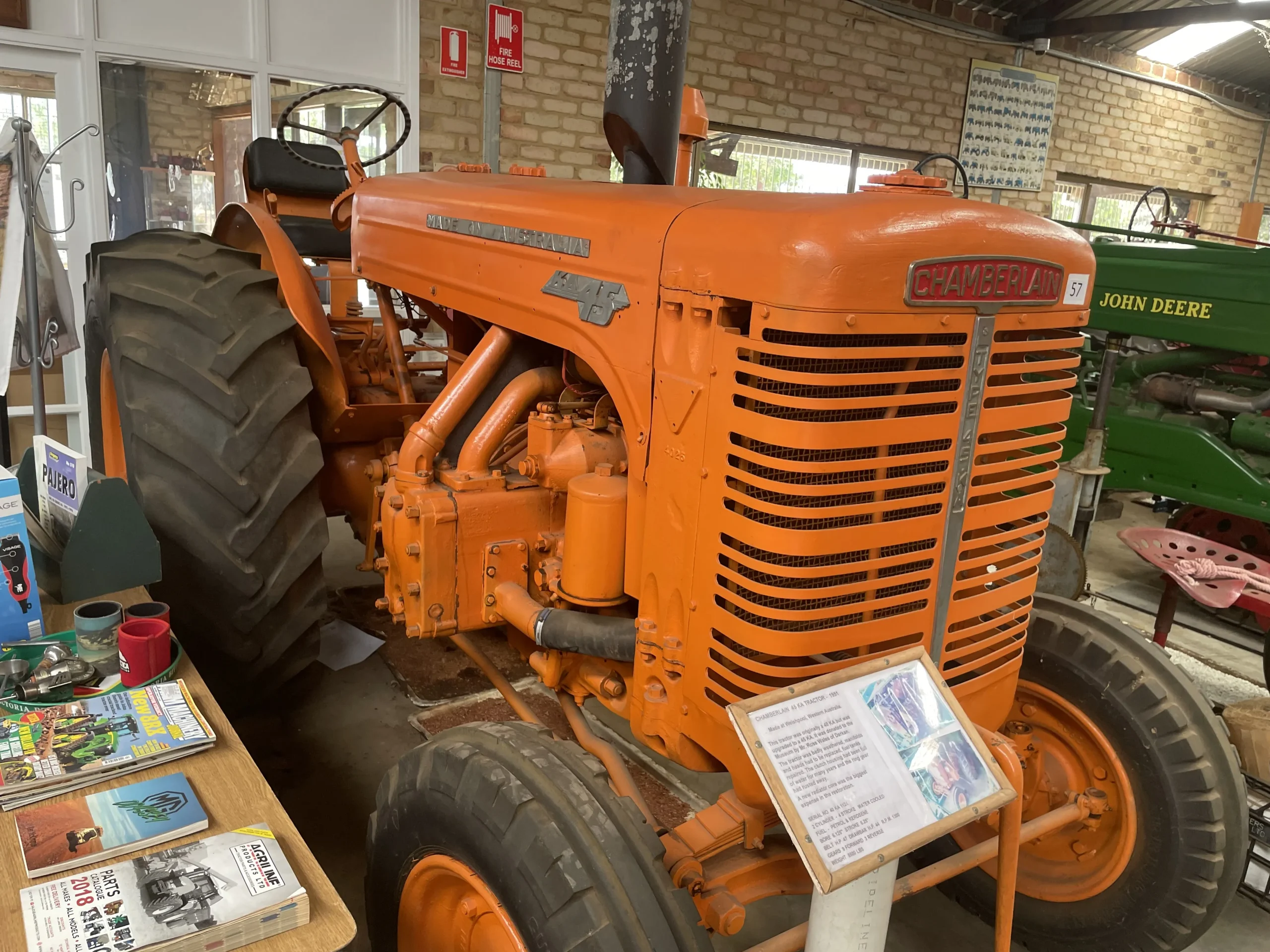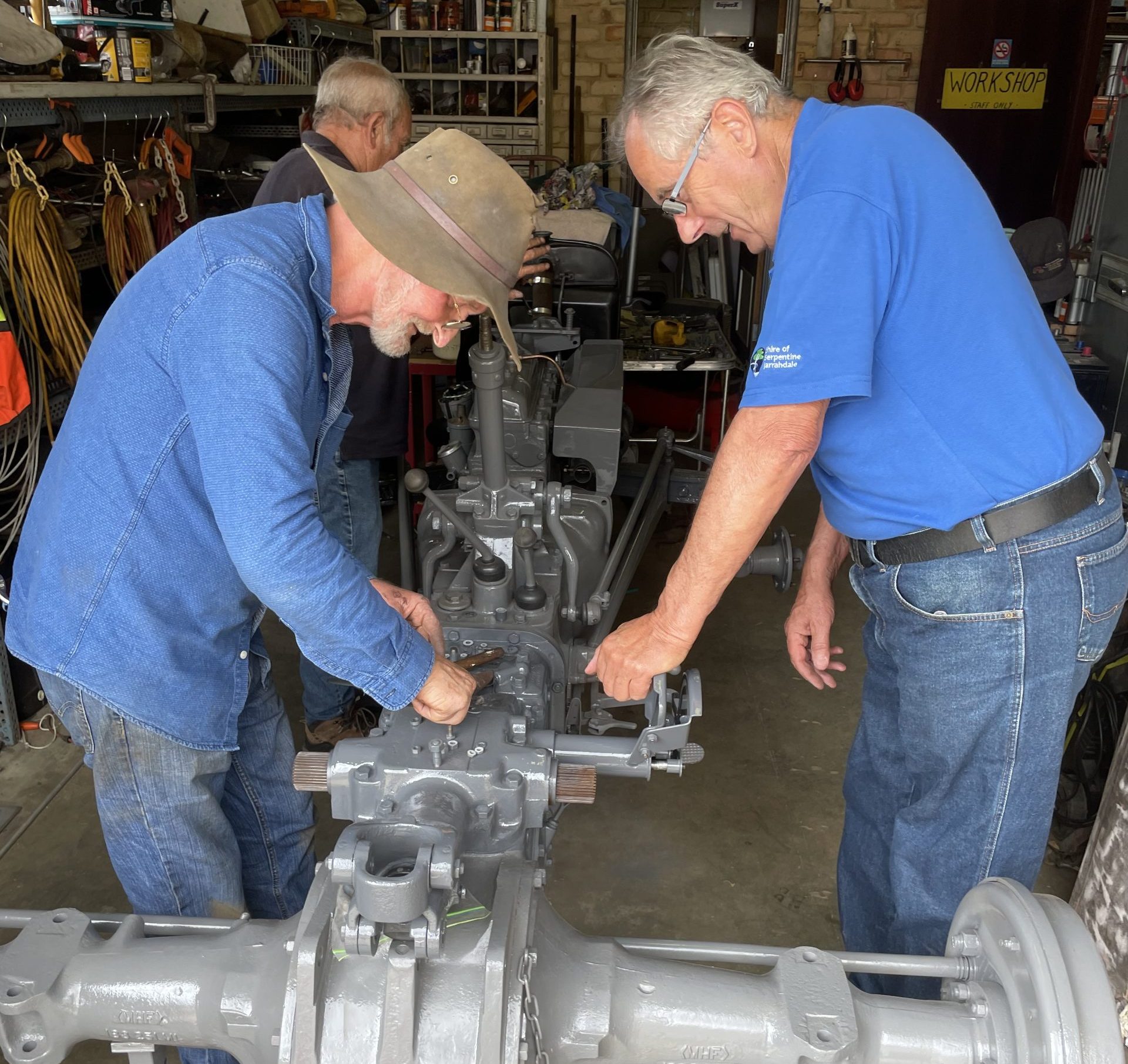Address
Wellard Street, Serpentine, WA, 6125
Work Hours
Mon-Tues: Closed
Wednesday: 9am-1pm
Thur-Fri: Closed
Sat-Sun: 10am-3pm
Public Holidays: 10am-3pm
Note: Closed on Good Friday and Christmas Day
Address
Wellard Street, Serpentine, WA, 6125
Work Hours
Mon-Tues: Closed
Wednesday: 9am-1pm
Thur-Fri: Closed
Sat-Sun: 10am-3pm
Public Holidays: 10am-3pm
Note: Closed on Good Friday and Christmas Day
Our passion is to share our collection of vintage tractors (over 60) and machinery (over 60) with people from all over the world.
Most of our collection of tractors and machinery has been restored to excellent working condition, after having served the farming community in the state of Western Australia from the early 1900’s.
The Hugh Manning Tractor & Machinery Museum is also known as the Serpentine Tractor and Machinery Museum

The Hugh Manning Tractor and Machinery Museum Inc was the brain child of the late Hugh Manning, who with the support of Alcoa of Australia and the Shire of Serpentine-Jarrahdale, succeeded in founding the Museum. It opened on 18th September 1993.
Today, the spirit of Hugh Manning continues through the commitment of many volunteers who work enthusiastically to maintain and develop Hugh’s legacy to the district. The Shire of Serpentine-Jarrahdale still provides active and continuing support for the Museum, which is much appreciated by members and visitors. Bendigo Bank is a continuous supporter and recently a grant has been received from the Australian Museums and Galleries Association (AMaGA) to create this website.
If you’re in the neighbourhood, please drop in to see our collection up close and experience a valuable part of the working history of rural Australia.
Before gasoline-powered tractors arrived on Australian farms, they were well established in other industries, much reducing the work previously done by horsepower or man power. There was many businesses importing and manufacturing stationary engines on the West as well as the East coast of the continent from around the 1870s to well into the 1970s. The golden era in their usage was between the War years when most farms were not connected to the electricity grid, yet they required small engines to supply all forms of motivation: pumping water, grinding grain, separating cream from milk, churning butter, sawing wood, lighting generators and washing machines, to name just a few.
The early big engines in use in Australia were predominantly made in the United Kingdom. They were typically difficult to start due to the requirement for a blow lamp to heat the top of the motor until it was hot enough to ignite the kerosene used to power the engine.
The Museum has an excellent example in the Wilson Oil Engine plus an extensive range of the Australian-made McDonald engines.
The Museum’s collection of large petrol engines is supported by a good selection of the small hit-and-miss and throttle-governed farm engines which were collected from around the local district. They range in power from ¾ horse power (hp) to 11 hp.
Unfortunately, the manufacturers of these slow revving, heavy cast iron engines with large flywheels are no longer around, because these engines have been replaced by cheaper, higher-horse power alloy versions, but their legacy can be still admired in the Museum where volunteers passionately maintain and run these engines on occasions such as group tours and Open Days.
The Museum is fortunate to have a substantial and varied collection of petrol, kerosene and diesel tractors: steel wheeled tractors, rubber tyred tractors, and tractors with tracks. They are aged from about 60 years old to around 100 years old.
The Museum members are continually maintaining and restoring the tractor collection. The aim is to provide current and future generations the opportunity to appreciate and enjoy the evolution of the “iron horse” that replaced manual labour and horse power with sophisticated and powerful machines.
Museum members try to keep most tractors and machines in running order. Come on a Wednesday morning when we can test run some of our collection!
The Museum is very proud of the History of Sheep Shearing display that is a recent addition to the Museum’s collection. Once again, it reflects the passion of its creator, Trevor Keating, who developed a collection that covers almost a century of shearing. It traces the development of shearing techniques from the early days of hand shears to the evolution of powerful handpieces (including the so-called “wide comb” handpieces). There are stories and photographs that highlight the characters and record breakers in the shearing industry.
The Museum shop sells a wire range of tractor related memorabilia and models.
Recently some Museum members have created a small dairy collection, complete with realistic sounds for young enthusiasts.
This display showcases the evolution of milking cows from the days of single-handed, manual milking to the mechanised milking that supports the dairy industry today. See how your great grandparents milked their own cow and processed the milk into cream and butter.

The Museum has an area set aside for young people to wander through the collection and also express their interest through their creative responses to the collection through drawings and games. Museum members are very conscious of the need to focus on the historical importance of the collection and its relevance to the development of modern farming methods. One of the aims of members is to encourage young people to make the links between agriculture and its relationship to the food chain. The cardboard box of milk on the breakfast table still comes from a cow in a farmer’s paddock and our display shows how!


Our members’ experience and enthusiasm ensure that all visitors have a fantastic time at the museum!
The Museum Team welcome group visits and Special Events you may wish to hold in the Museum. Please phone us to make arrangements.
